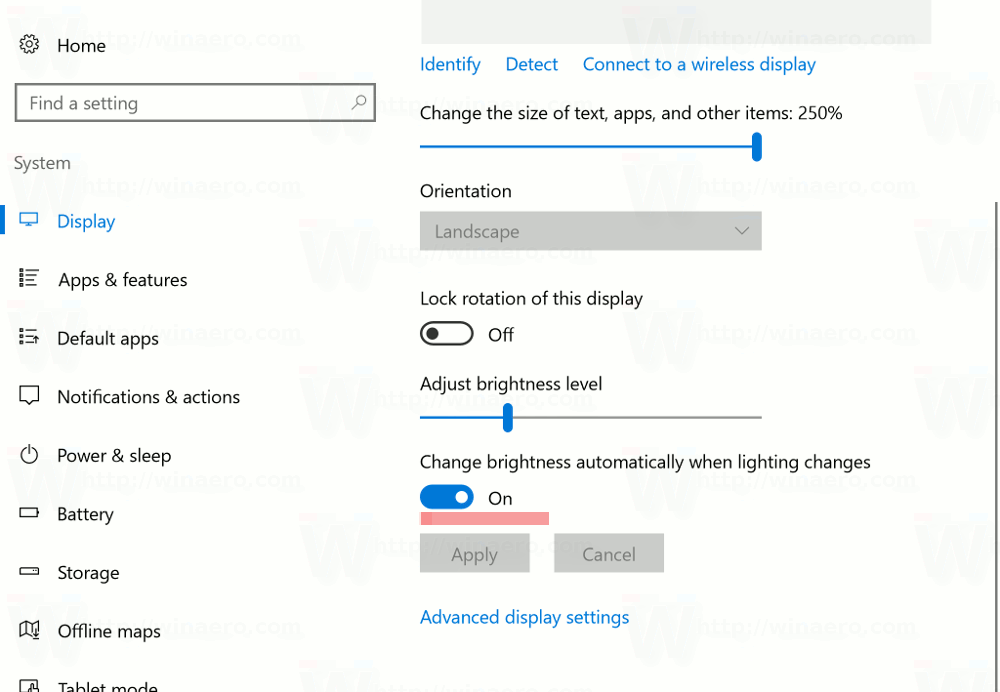How To Change Brightness Windows 10
- How To Change Your Brightness Windows 10
- How To Change Brightness On Laptop
- How To Change Auto Brightness Windows 10
Nov 27, 2015 I recently got the Windows 10 upgrade on my laptop, and now I can't adjust the brightness of my screen. I don't know what the name of the model I have is, but it's an Asus laptop with a touchscreen, model number atheros/ar5b125. Before the upgrade, I adjusted my screen brightness by holding the Fn key and pressing f5 or f6 to lower or raise it. Below are some of the ways you can adjust desktop screen brightness in Windows 10. Related: set new wallpaper every day in Windows 10 automatically. Method 1: Use Brightness Buttons on Your Monitor. The easiest and sure-fire way to change desktop screen brightness in Windows 10 is to use the monitor buttons.
Most of us spend hours in front of a computer every day. Having the correct screen brightness is one of the best ways to avoid eye strain while working on a PC or any other device that has a display.
On supported PCs, Windows 10 automatically adjusts the screen brightness but most users disable auto or adaptive screen brightness to manually adjust the brightness level.
Thankfully, Windows 10 offers a couple of easy ways to quickly adjust the screen brightness, unlike earlier Windows versions.
In Windows 10, in addition to hotkeys, you can also use Settings app as well as Action Center to adjust screen brightness.
Please note that the following methods may not work on a desktop PC connected to an external monitor. If you are on a desktop computer, please use the physical buttons on the monitor to adjust the brightness.
Method 1 of 4
Adjust screen brightness using hotkeys
Almost all notebooks come with dedicated keys to quickly adjust the screen brightness. For instance, on my ThinkPad laptop, Fn + F5/F6 can be used to adjust the screen brightness.
Have a look at your keyboard to see brightness symbol on Function keys.
And if the hotkeys are not working, make sure that the display and keyboard drivers are installed.

Method 2 of 4
Use Action Center to display brightness in Windows 10
Step 1: Click on the Action Center icon in the taskbar to reveal the Action Center pane.
Step 2: Click on the brightness tile to increase/reduce the display brightness. If you can’t see the brightness tile, click Expand button.
Clicking on the brightness tile once will take the brightness to the next level. For instance, if you click on the tile when the brightness is at 25%, the brightness will be increased to 50%. Once the brightness is reaches 100%, click on the tile again to start from 0%.
Method 3 of 4
Use settings to adjust screen brightness in Windows 10
This is the best way to adjust the correct screen display brightness as you can increase or reduce the brightness one percent at a time.
Step 1: Open Settings by clicking on its icon in the left side of the Start menu.

Step 2: At the home page of Settings, click System.
Step 3: You should now see Adjust brightness level option with a slider to adjust the display brightness. If you can’t see the option, click on Display (Settings > System > Display).
Note that the brightness level adjuster might not appear if you’re trying to adjust the screen brightness of a monitor connected to your PC.
Method 4 of 4
Use Control Panel to adjust brightness in Windows 10
How To Change Your Brightness Windows 10
This is the classic way to manually adjust screen brightness in Windows 10.
Step 1:Right-click on the battery icon in system tray of taskbar and then click Adjust screen brightness option to open Power Options window.
How To Change Brightness On Laptop
Step 2: At the bottom of the screen, you should see Screen brightness option with a slider. Move the slider towards the left of the screen to reduce the screen brightness and towards to the right to increase the brightness.
How To Change Auto Brightness Windows 10
Let us know if there are additional ways to adjust screen brightness in Windows 10.
